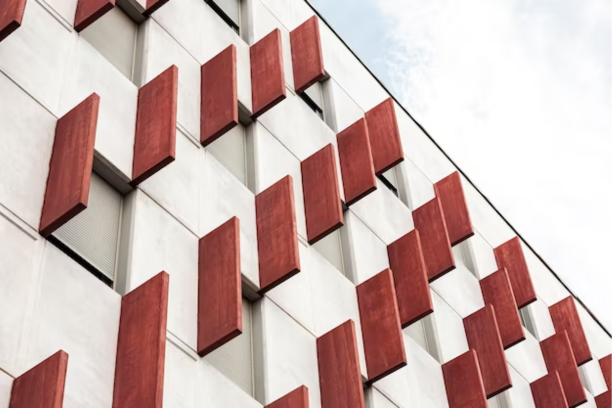Introduction to wall cladding: What it is and why it’s important?
Wall cladding refers to the process of covering the exterior or interior walls of a building with a protective or decorative layer. It involves the installation of materials onto the wall surface to enhance its appearance, protect it from environmental factors, and improve insulation properties. Wall cladding can be done using various materials, such as wood, stone, metal, vinyl, composite panels, ceramic tiles, or glass.
Wall cladding provides an additional layer of protection to the underlying wall structure. It acts as a barrier against weather elements like rain, wind, and sunlight, preventing damage and deterioration of the wall material. Cladding can also offer resistance against fire, impact, and moisture penetration.

Why do you require wall cladding?
If you’re supposed to know about wall cladding and its major advantages then make sure to go through the points mentioned below:-
- Aesthetics: Cladding is often chosen for its ability to enhance the visual appeal of a building. It can transform the appearance of a plain or outdated wall, giving it a more modern, stylish, or customized look.
- Insulation: Some types of wall cladding offer thermal insulation properties, helping to improve the energy efficiency of a building. Insulated cladding systems can reduce heat transfer through the walls, resulting in better temperature regulation and reduced energy consumption for heating and cooling.
- Maintenance: Cladding materials are chosen for their durability and low maintenance requirements. They are often resistant to fading, staining, rotting, or insect infestation, reducing the need for frequent repairs or repainting.
- Sound Insulation: Certain types of wall cladding, particularly those with acoustic properties, can help reduce noise transmission between different areas of a building and room.
Get wall cladding designs for living room with our collection of design for your home and building.

Why wall cladding is important?
Wall cladding is important for several reasons:
- Protection: Wall cladding serves as a protective layer for the underlying wall surface. It acts as a shield against external elements such as rain, wind, sunlight, and temperature fluctuations. Cladding materials are designed to withstand these environmental factors and prevent damage to the wall structure.
- Weather Resistance: Different regions experience varying weather conditions. Wall cladding provides a barrier that helps to keep moisture out, preventing water infiltration and potential damage to the wall. It also helps to insulate the building from extreme temperatures, reducing heat loss or gain and improving energy efficiency.
- Aesthetic Enhancement: Wall cladding can significantly improve the appearance of a building. It offers a wide range of design options, including various colors, textures, patterns, and materials. By selecting the right cladding material, you can enhance the overall aesthetic appeal and create a visually pleasing exterior or interior.
- Durability and Maintenance: Cladding materials are chosen for their durability and low maintenance requirements. They are designed to withstand wear and tear, resist fading, cracking, or deterioration over time.
For better convenience make sure to reach out to us at Alrafahia where you’ll come across multiple services in terms of wall cladding and wall cladding elevation design.



